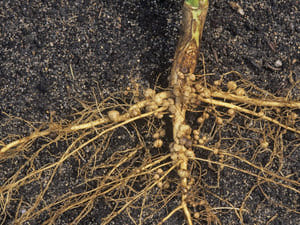Cultivation details
Requires a warm position in full sun, succeeding in dry or well-drained moist soils[182]. Best grown against a wall[182] in the colder areas of the country[188]. Tolerant of wind and salt spray[200], it grows well in maritime gardens[184]. Plants are not hardy in the colder areas of Britain, they tolerate temperatures down to about -10°c when fully dormant[184, 200], though the young growth in spring can be damaged by late frosts. They do not succeed in the open at Kew, though they grow well against a wall[11]. The flowers have a vanilla or sweet pea scent[245]. Any pruning should consist of cutting out dead wood in the spring[188]. This species has a symbiotic relationship with certain soil bacteria, these bacteria form nodules on the roots and fix atmospheric nitrogen. Some of this nitrogen is utilized by the growing plant but some can also be used by other plants growing nearby.
Propagation
Pre-soak the seed for 12 hours in warm water and then sow in spring in a greenhouse[200]. The seed can also be sown in a greenhouse in autumn. Germination should be quite rapid. Prick out the seedlings into individual pots when they are large enough to handle and grow them on for at least the first winter in a greenhouse. Plant out in late spring or early summer.
